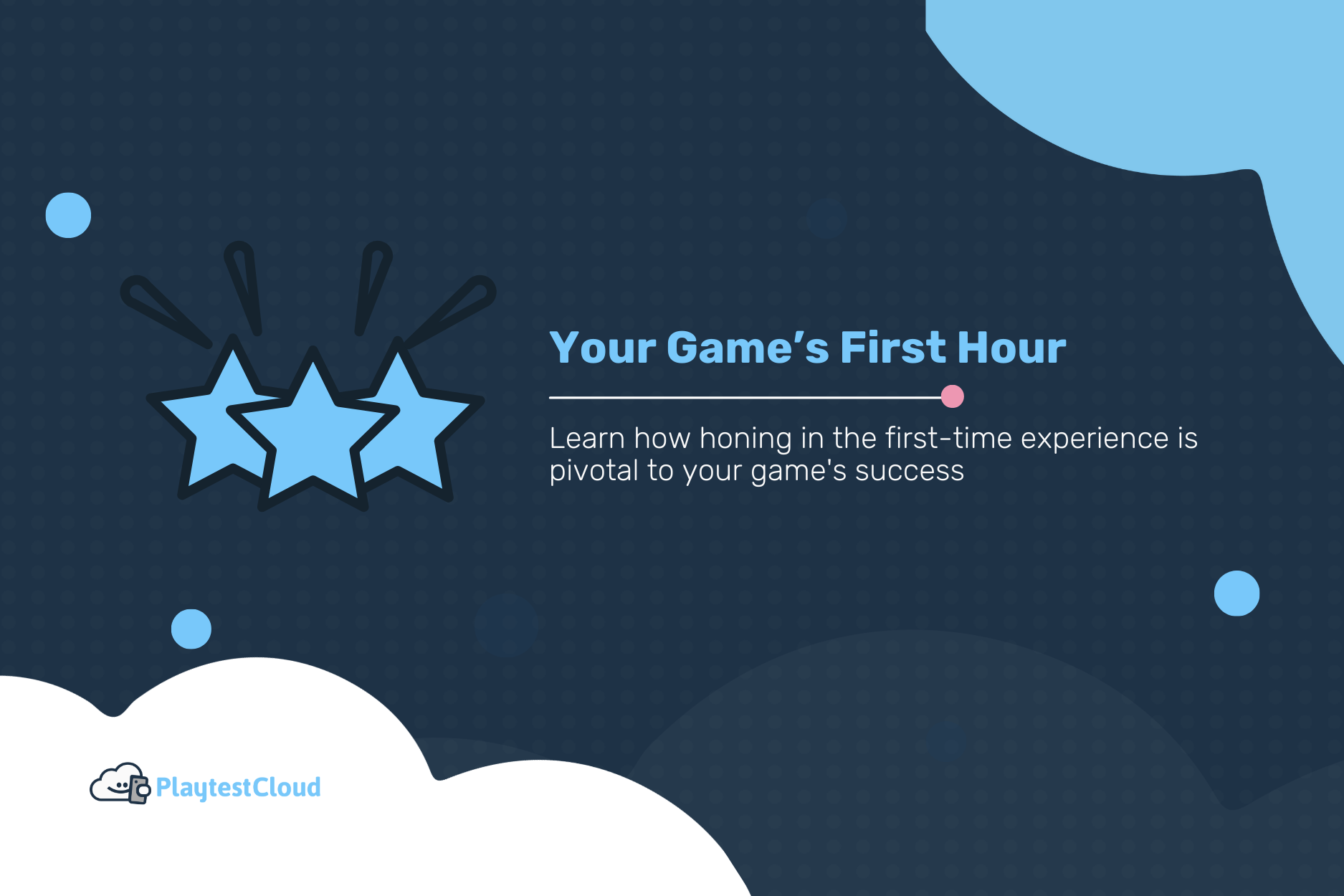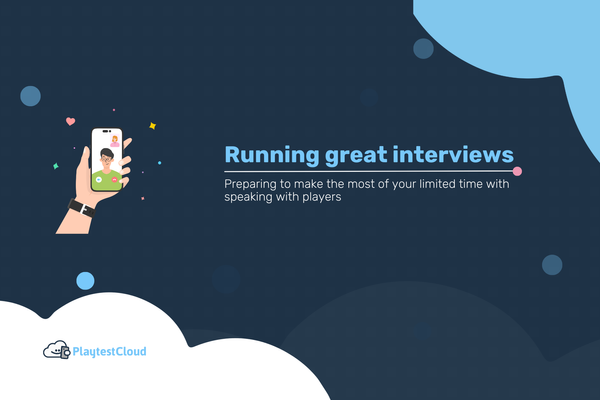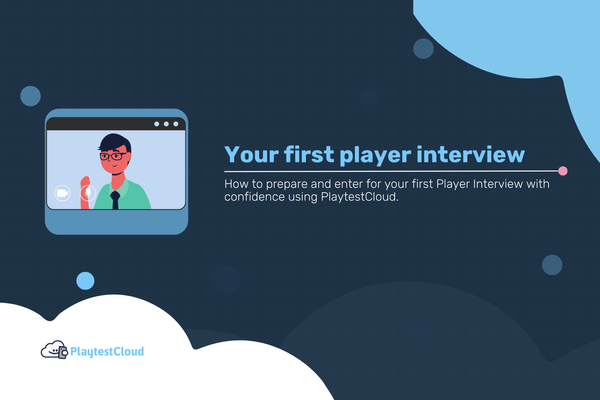The first hour as crucial time: how it can make or break your game
Game developers know: the first hour experience for players is one of the most important times in a game to entice and hook players to continue playing. Mobile games are plentiful in the app store, and tend to be abandoned for the relatively simple reason of not being interesting enough to keep a player’s attention. In the game studies literature, much has been written about the first play experience, also known as the first-time user experience (FTUE) in user research, and its impact on player retention and even the player’s likelihood to recommend the game to others. The first time user experience is a pivotal time for players, but by testing with tools specifically designed for the first hour of gameplay with PlaytestCloud, you can avoid these pitfalls.
New players, and how to entice them early
Within traditional playtesting, the “first hour” or first gameplay session of a new game is seen as one of the most critical points of time that can influence whether play is continued or not[1]. As Sid Meier of Civilization fame explains, the first gameplay experience should be “really compelling, really fun, almost a foreshadowing of all the cool stuff that’s going to happen later in the game”[2]. The first hour of gameplay should teach the player skills they will utilize for the rest of the game and showcase what playing the rest of the game will look like, as noted by researchers looking at heuristics that enable better usability and higher likelihood to continue playing[3]. While this holds true for nearly all games, it is especially pertinent to consider different views on payment -- such as free to play, subscription-based, “freemium”, and so on -- as player retention is paramount towards a game development company’s financial security[4]. As games are “experience-oriented products” with short life cycles, “their success greatly depends on how consumers feel toward and experience them”[5].
Listen to the experts: What games user researchers take into account
Games user research, and testing the first hour of gameplay to hook in players, has become an extremely important component of video game development. This is because creating and publishing games is a highly competitive space, and providing a great user experience for first-time players can help distinguish your game and work towards making it profitable[6]. As is outlined by several games user research authors, there are several issues to keep in mind when building and testing your first gameplay experience. These include:
- Having a challenge that is adequate for your target player group that stays challenging for more than that first experience.
- Discovering whether the abilities, mechanics, and controls contributed positively to the experience; whether there is too much support to allow players to progress in the game;
- Considering what sort of hindrances – whether they be controls, enemy AI unpredictability, or otherwise – will push players to stop playing[7].
Playability and its relationship to the gameplay experience
Of note in the literature is a push towards a qualitative and quantitative understanding of what is called “playability”, or “a measure [of] the degree of satisfaction of players in order to help define a positive [user experience] within [a game]”[8]. While there have been many proposals for heuristics – short-hand suggestions for best practices – that relate to playability, it is hard to come by one set that will fit for each specific project a team has. As such, it’s best to focus on what the needs are within the game, taking into account what playability will mean for the players as opposed to general rules to follow despite what genre, skill level needed to complete the game, and so on. Consider the broad definition from those authors, where playability is defined as “the degree to which specified users can achieve specified goals with effectiveness, efficiency and, especially, satisfaction and fun in a playable context of use.”[9]. This can be readily applied to an introduction or first gameplay experience section of a game, to consider the ways in which playability for one’s target players may be missing the mark, leading to poor user retention. In this way, looking at the literature and utilizing new and effective measures can offer specific ways to tailor user research testing for one’s specific game and first hour experience.
Investing in the beginning is investing in the whole experience
All of this is to say that, while a game may be a masterful story told over the course of many, many game sessions and necessitates time and money spent on the player’s end, if players do not feel convinced in the first hour, they will likely not continue playing. Testing this small, first interaction with a scoped focus can have an immense impact on player’s behaviour to continue putting effort into a game. PlaytestCloud has a set of tools and processes designed specifically to understand and report back what players really think about the first experience with your game. This can take the form of running a one hour, single session playtest or a fifteen minute, four session (multisession) playtest, depending on your needs. Take this opportunity to improve your FTUE with PlaytestCloud, use the knowledge you will gain from playtesting and discover the results that you need to make your game a success.
(Davis et al., 2005, full article; Cheung et al., 2014, full article) ↩︎
(Cheung et al., 2014, p. 58) ↩︎
(Federoff, 2002, pp. 13-14/p. 31, full article) ↩︎
(Daneva, 2017, p. 56, full article) ↩︎
(Huang et al., 2017, p. 329, full article) ↩︎
(Amaya et al., 2008, pp. 39-40, chapter 4 of Isbister & Schaffer's Game Usability) ↩︎
(Hoonhout, 2008, p. 66, chapter 5 of Isbister & Schaffer's Game Usability) ↩︎
(Sánchez et al., 2012, p. 1033, full article) ↩︎
(Sánchez et al., 2012, p. 1037) ↩︎







